Today, videos are used for all kinds of purposes from ranting about your favorite games on YouTube to preparing training materials and sales campaigns for big companies. The spoken part of the video usually has central importance, so it’s common to display it as text alongside the video. However, there are multiple options for displaying the text, and some users may be confused by the possibilities.
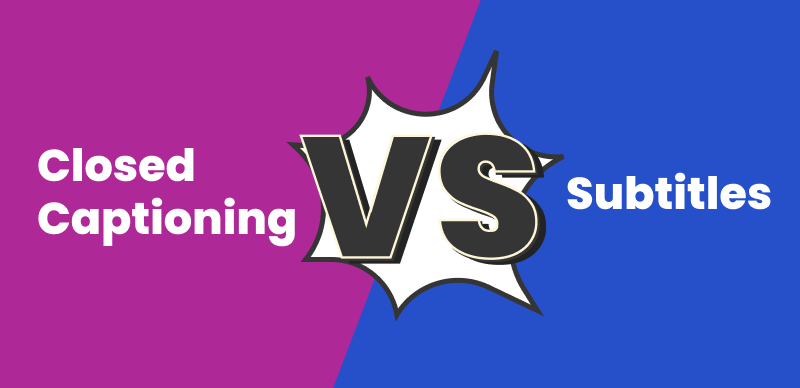
Closed Captions vs. Subtitles
In some cases, it’s advantageous to have closed captions accompanying the video, but in other instances it might be better to use subtitles. To choose the proper format, it’s necessary to understand the difference between closed captions vs. subtitles and how each of these formats functions in practice. This article will attempt to clarify any terminological ambiguity related to this topic and provide some guidance for users who need to decide which format to include in their online videos.
The Purpose and Benefits of Closed Captions
The main reason why content creators add closed captions to their videos is to provide clarity regarding the audio content of the clip. Basically, captions represent a full transcription of all sounds that can be heard in the video, including the spoken part as well as the ambient sound. This gives viewer great insight into the content of the clip regardless of the quality of audio (or even if the audio is turned off), while also providing a convenient way to search through the content and find specific parts.
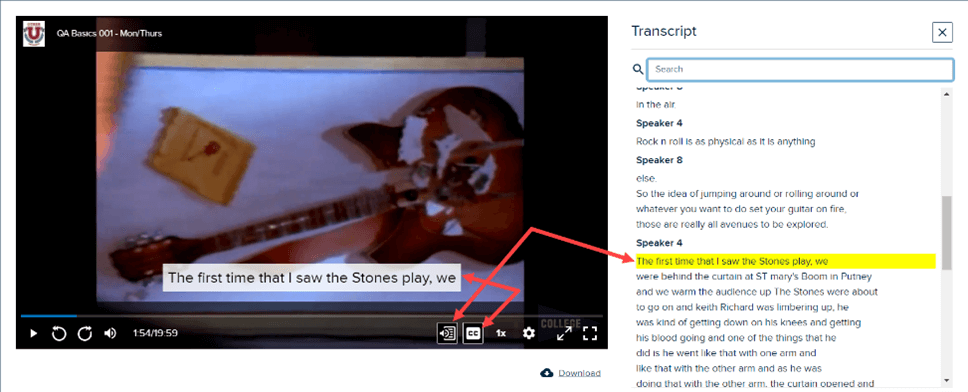
Benefits of Closed Captions
As opposed to open captions which are permanently displayed and can’t be turned off, closed captions are shown on the screen only when the viewer wants them to. They are typically displayed on the side rather than on top of the video, run in the exact order as in the video, and may include time stamps and names of the speakers for easier content discovery. Creating closed captions is a good idea whenever the author wants to make the video more accessible and give the viewer additional options, which is why they are frequently found in business-related and educational videos.
The Role and Advantages of Subtitles
We are all familiar with subtitles shown with a foreign-language film – they consist of running text displayed at the bottom of the screen that is synced with the audio stream and closely follows the sentences spoken in the video. However, subtitles typically don’t include any descriptions of other audio elements, as it is assumed the viewer can hear them. Subtitles can be merged into the video or activated optionally, depending on how the video was edited and in which player it is viewed.
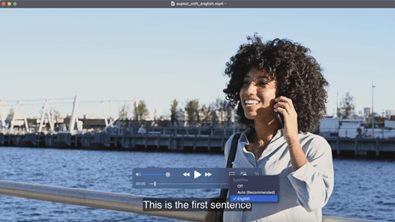
Benefits of Subtitle
The primary role of subtitles is to enable viewers who have difficulty understanding the audio to catch every word. In addition to showing translations of the speech in the video, they can also be used to assist native speakers when the audio is not entirely clear, speakers have heavy accents, or there are sounds or music overlapping with speech. Subtitles are commonly provided for feature films, documentaries, as well as talking-head videos and social media clips, and they are often saved as a separate file in a textual format.
Differences between Closed Captions and Subtitles: When to Use Each?
At first glance, captions and subtitles look very similar so it’s understandable that many people don’t make a distinction between them. Still, they are not exactly the same thing and there are some characteristics of captions that subs are usually missing. Most notably, subtitles have more limited content and only include the transcribed speech, without the addition of timestamps, speaker identifications, or background sound description. Thus, subtitles can be seen as a less complete version of captions that stops short of documenting the entire content of the audio channel in the same way closed captions would, and instead focuses on matching the spoken content word for word.
Subtitles are a better choice when a majority of viewers is only expected to see the video once, either for entertainment or other purposes. In cases when viewers need to interact with the content multiple times and/or draw information from it, closed captions could be the smarter option. Since captions don’t encroach on the visuals, they are usually favorable to subtitles for videos where lots of data is communicated visually. Searchability of the captions is another key advantage that comes into play whenever the video is heavy on technical details and must be reviewed multiple times.
Selecting the Right Option: Key Factors to Consider when Choosing between Captions and Subs
As we explained above, sometimes the decision whether to use subtitles or captions might come down to nuances. Content creators should carefully consider many different aspects of the video before they can recognize which option will work the best. We outlined some of the main factors that affect this decision and need to be taken into account:
- The intended purpose and main topic of the video
- The volume of verbal content and quantitative information contained in the video
- Format of the video and the primary method for its distribution
- Demographic characteristics and expectations of the audience
- Public availability of the video and legal regulations it must follow
- Quality of the audio and clarity of speech in the video
- Presence of speech in a language most members of the audience don’t understand
Pro Tip. How to Generate Subtitles and Captions with AI
When you understand the differences and main features between closed captions and subtitles, now you will need to find a way to add captions or subtitles to your video content. CapUp is a professional video caption generator that is designed to streamline the process of adding captions to videos. It leverages advanced natural language processing algorithms to automatically generate accurate captions in multiple languages, enhancing accessibility and viewer engagement without the need for manual transcription.
Key features of CapUp:
- Auto Accurate Captions: CapUp creates video captions in 12 different languages using AI, ensuring precise timing and accuracy.
- Trendy Templates: The platform offers trendy caption templates such as MrBeast, Alex Hormozi, and Ali Abdaal to boost your video’s appeal.
- Auto Zoom for Highlights: Strategic auto zooms are used to focus on important moments and extend viewer watch time.
- Sound Effects: Users can easily add sound effects to their videos, enriching scenes and intensifying emotions for a more immersive experience.
- Efficiency and Virality: The tool is designed to save time and improve efficiency, enabling creators to produce viral videos for platforms like TikTok, Instagram Reels, and YouTube Shorts to attract a larger audience.
Steps to add subtitles in CapUp:
Step 1. Logging into your CapUp account. Simply upload your video with a single click.
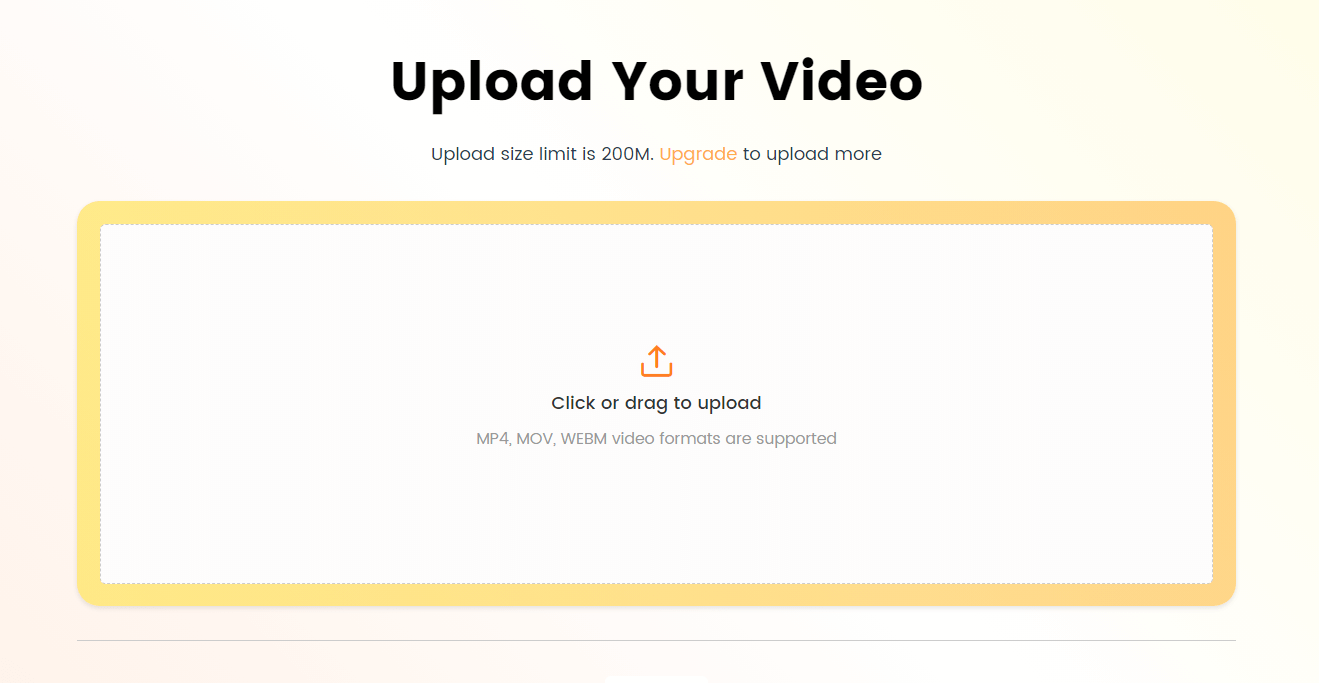
Log in and Upload the Video
Step 2. From the available options, choose the language for your video. Once selected, let CapUp process your video.
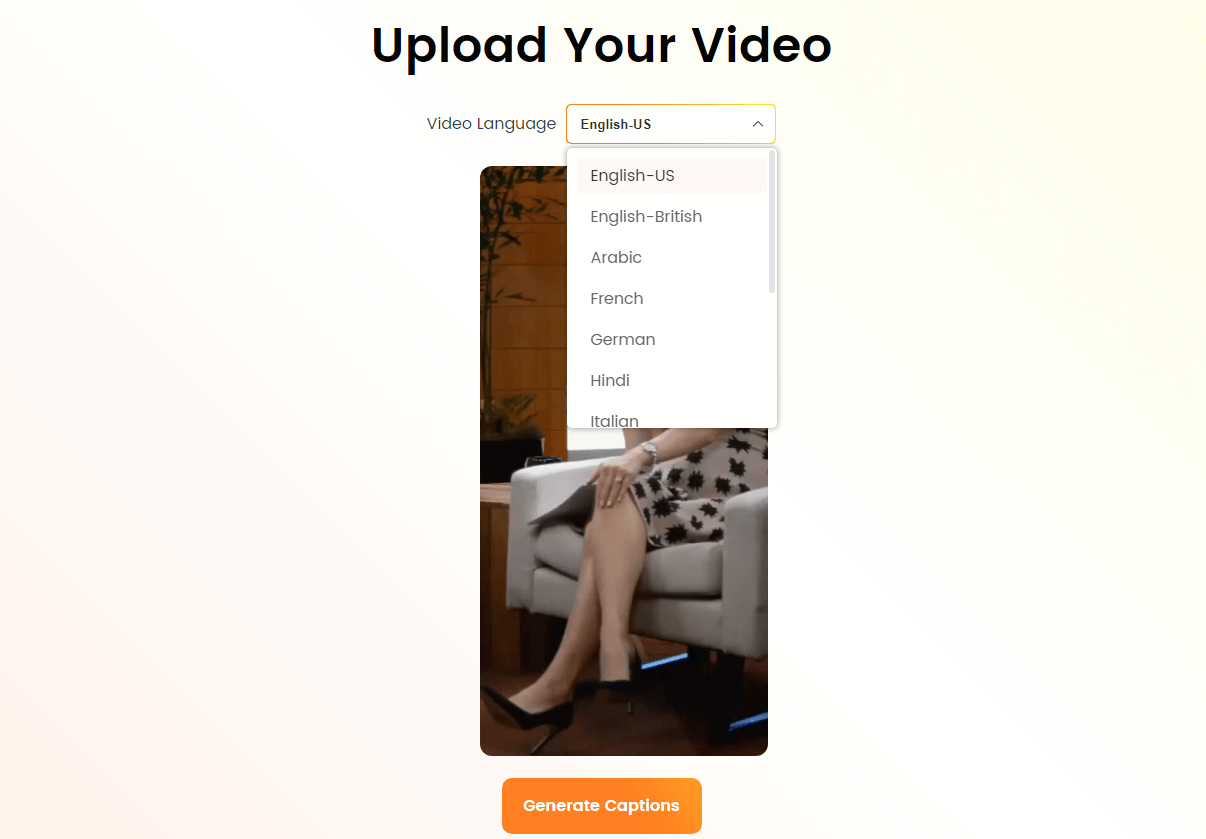
Select the Language that Matches Your Video
Step 3. Navigate to the “Template” section and select a design template from popular influencers to enhance your video’s visual appeal.

Select the Preset Caption Template
Step 4. If needed, make adjustments to the template to suit your content and style. Fine-tune the captions for precision and to boost their impact. You have the flexibility to modify fonts, add emoticons, and incorporate sound effects and animations into your subtitles.
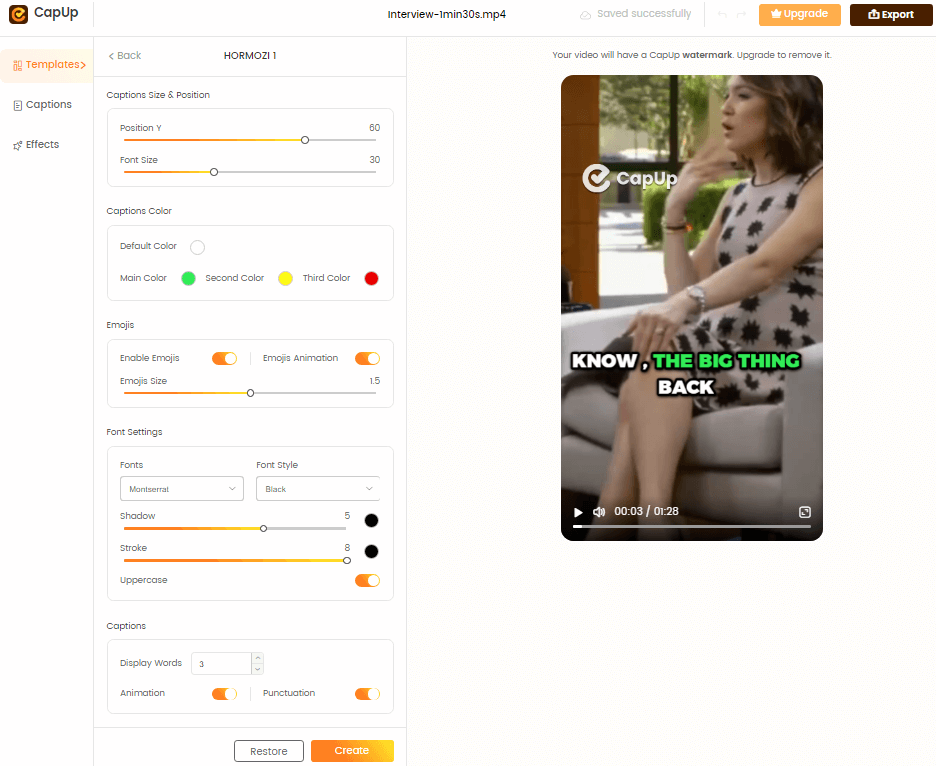
CapUp – Customize the Template Setting
Step 5. Select a frame from your uploaded video or upload a new image to serve as the cover for your video. Once you’re satisfied with your edits, click “Export” to finalize and save your YouTube Shorts ready for sharing.

CapUp – Two Ways to Edit Video Cover
Closed Captions vs. Subtitles FAQ
Do captions contain everything that can be found in subtitles, and vice versa?
No, there is a slight difference in scope between subtitles and captions. Closed captions generally contain everything the subtitles do, but also have some additional elements such as timestamps and descriptions of ambient sounds, which are usually absent from subtitles.
Is it possible to include subtitles and captions in multiple languages with my video?
Yes, providing multi-language subtitles for a video is a common practice that helps to extend the reach of the video to international audiences. In this case, multiple versions of subtitles are produced and added to the video, while the user is given the possibility to toggle between them at will.
Is there a software application for the automatic generation of closed captions?
While it is best when closed captions are created by the video author based on the original script, it’s also possible to use AI-based speech-to-text software solutions and extract captions from an existing video. However, captions generated by software may not always be completely accurate.
Final Words
Both captions and subtitles can add much-needed intelligibility to your videos and assist the viewers to understand them well. However, each of these formats has some advantages that become more important in specific scenarios. We explained the main characteristics and typical use cases for both closed captions and subtitles, and tried to delineate between them in terms of practicalities. Picking the most suitable option can improve the performance of the video and provide value for the viewers, so it’s worth spending some time strategizing over this decision with full understanding of its implications.
